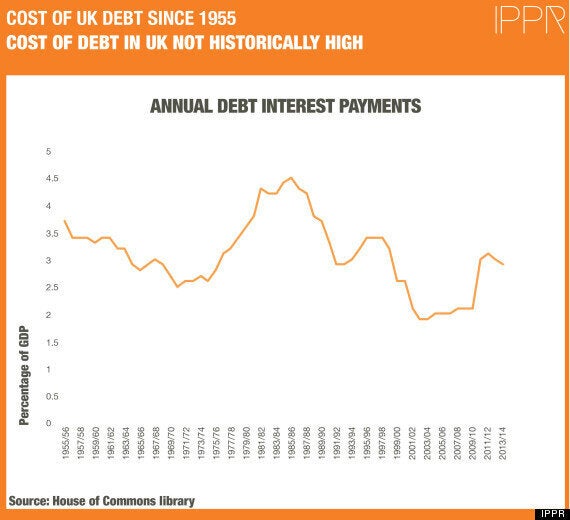This conference season has confirmed that the UK's three major parties will go into the coming election in near agreement about the need for further immediate cuts in public borrowing. Each party has a different idea about what it means to balance the country's books, but all three agree that it must be done by the end of the next parliament.
Two weeks ago, Ed Balls announced Labour's target to eliminate borrowing on current spending. Last week ,George Osborne reiterated the Conservative's strategy to bring the entire budget into surplus by 2018/19. On Sunday, Danny Alexander pitched the Liberal Democrats plans to also bring the budget into surplus by the same year, minus what he described as 'productive' capital investment.
These differences over whether the budget ought to be brought into balance or surplus, including or excluding some or all elements of capital spending, matter because they affect the total amount of deficit cutting needed. But the degree of consensus over the need for speedy fiscal consolidation is striking.
Yet the economic rationale for such a rapid attack on the public sector's annual net borrowing is not without controversy. In an article for the FT last year, written in support of such a strategy, the economist Ken Rogoff discussed the risks (past and present) of a UK default. He asserted that rapid deficit reduction was and is needed as an effective insurance policy against those risks.
The economist Simon Wren-Lewis responded by arguing that, in so far as austerity represents an insurance against debt crisis, the costs in lost output are considerable; that in any case the UK already has an alternative insurance policy against panicking credit markets in the form of Quantitative Easing (QE); and therefore to the extent that the risks of a debt crisis are less likely, a slower rate of deficit reduction is 'optimal'.
Neither side of the debate questions the importance of setting the UK on a path of debt sustainability. But the critical point of difference resides around timing, as determined by the balance of risk. Get it wrong, and the potential costs for society and living standards are considerable.
In light of this, it is helpful to consider one indicator for these risks - the cost of government debt interest payments as a percentage of GDP - in historical context. This takes account of both the magnitude of overall government debt as well as its cost including the risk premium attached to it by financial markets.
Using figures published by the House of Commons Library in July this year, the chart below plots the cost of UK debt since 1955, as a percentage of GDP. Presented in this way, it is apparent that the UK is not facing historically high levels of costs associated with debt. Indeed, the average cost of debt since the financial crisis (2.7%) is less than the total average from 1955/56 to the present, and from 1980/81 to present (both 3.1%). It is even equal to the average cost of debt since 1990 (2.7%).
It is worth noting that the Office for Budget Responsibility (OBR) expects the cost of debt to rise again to 3.7% of GDP by 2018/19. But this will still only take the post 2007/2008 average to 3% of GDP.

In support of Rogoff's argument we can see that the rate of increase in interest payments during 2009/10 was considerable, but that it begun to taper off and reverse soon after the Coalition government announced plans for rapid deficit reduction. However, the timing also suits Wren-Lewis' view that QE (started by the Bank of England in 2009) presents an equally effective insurance, as it too coincides with reversing costs. Furthermore, despite the Coalition government going on to miss its original deficit targets by a considerable margin, there has been no apparent scare in the markets - as would have otherwise been indicated by a rising cost of government debt.
The real advantage of a longer term perspective, however, is that it places even the rapid rise in interest payments after the financial crisis, in appropriate context. Despite the fact that overall debt (as a percentage of GDP) for this period grew larger than at any time since the 1960s, the average cost of government interest payments in 2010/11 was less than or equal to the amount paid on debt for 31 of the 53 years prior to 2008.
In light of these figures, we can return now to the all important assessment of risk. In fairness to the Coalition government in 2010, the potential dangers as viewed at the time were rather more uncertain than they are now viewed in hindsight. Yet it is in the present, with all the advantages of assessing the risks retrospective of recent and historical trends, that we see more - not less - agreement over rapid austerity from among our political leadership.
More is it at stake than immediate political positioning. The agendas adopted now will define the policy space for most of the next parliament. The decisions made on these issues could be the difference for the livelihoods of millions people; not only over the short term; but the medium and longer term too.
Perhaps the present consensus on the haste of deficit reduction is deserving of greater scrutiny than is currently afforded by much of the UK's political class.